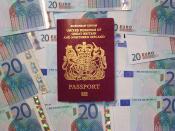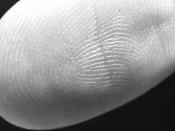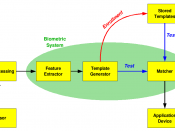Biometrics is now becoming more popular with the introduction of information technology. This technology is used to verify and/or identity someone using his or her own unique physical patterns, for example fingerprints, facial recognition, iris scanning, retinal scan and hand geometry or behavioural patterns such as voice, keystroke dynamics and signatures (See Appendix 1). Until recently, biometrics was considered intrusive and too expensive for most companies, but now with the need for increased security, the dropping of prices and the improvement in technology more organisations are looking towards biometrics to replace current tasks for example swipe card and password confirmation. It can also be used to keep track of time and attendance within a company. Biometrics has also been introduced to some countries to ensure the integrity of their voting system.
Although biometrics is something that some may consider being something of the future and they may not come across it, this essay will show that it is already used within some aspects of work and various testing within other fields that are ongoing.
Especially since the attack on the twin towers, information and identity are two fields in which the government feels should be protected to help in the fight against terrorism, "A computer based attack on the national infrastructure could cripple the nation more quickly than a military strike." (Robin Cook, March 2001).
Intense competitive pressures and razor-thin margins in the airline industry, as in many other industries, do not allow firms the luxury of freely expending resources to improve levels of service. Rather, the trick is to constantly seek ways to simultaneously achieve leaps in service quality as well as efficiency. Internet technology has in the last few years allowed many firms to do just that, and has redefined several service-oriented industries such as retail financial services,


